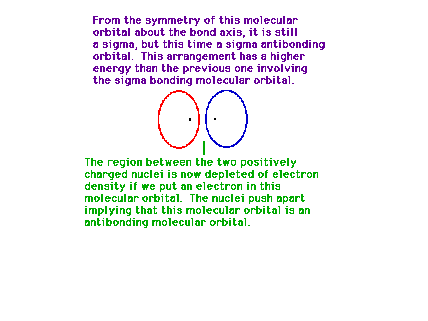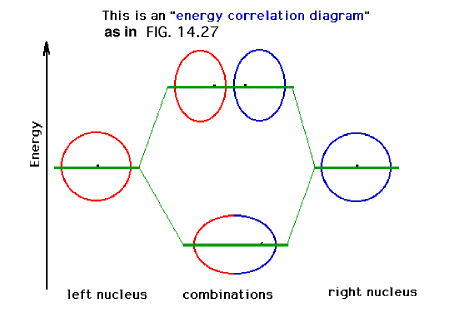| Lecture
#20, October 15, 1999 |
|
| CURMUDGEON
GENERAL'S WARNING. These "slides"
represent highlights from lecture and are neither
complete nor meant to replace lecture. It is
advised not to use
these as a reliable means to replace missed
lecture material. Do so at risk to healthy
academic performance in 09-105. |
|
| Back to waves and orbitals! |
 |
| A review of some terms, symbols, and displays of wave
functions for an electron in an atom. |
 |
| Solving the Schrodinger wave equation for a system in
which there is more than one center of force (a single
nucleus) is difficult. This year, John Pople, retired
Professor of Chemistry at Carnegie Mellon, shared the 1998 Nobel Prize in Chemistry for
devising mathematical tools amenable to computation that
have greatly eased the problem if one resorts to using a
computer. Approximate wave functions can be assembled
using the ones we're already intimately familiar with:
the hydrogen-like, one-electron atomic orbitals. |
 |
| Among the unusual properties associated with the
mathematics of waves is that of "interference".
This occurs even for classical waves such as water waves
and sound waves. Depending on whether combining waves
have the same sign of their amplitudes or opposite signs,
the waves interfere constructively or destructively,
respectively. |
 |
| If we add together a 1s atomic orbital on one
hydrogen atom with an identical 1s atomic orbital
centered on another nucleus, the resulting orbital
(whether there are electrons there or not) closely
resembles the more exact orbital one would calculate by
highly sophisticated mathematical techniques.Recalling
the significance of an orbital, this would then indicate
where an electron would be expected to be found if we
placed an electron in the system. It would also be used
to calculate the energy such an electron would have.
Energy and geometry are our recurring themes, n'est
pas? |
 |
| An electron in an orbital about two protons has
a potential energy indicated by the heavy curve if
constructive interference of the atomic orbitals
represents the electron's orbital. There is a certain
proton-proton distance at which the energy is minimum.
This is close to the bond length in the system with one
electron. |
 |
| If destructive interference represents the
orbital in which the electron happens to be found, the
linear combination results in a depeletion of electron
density between the positively charged protons. They
repel each other under these circumstances. |
 |
| A schematic of the orbitals on separated
protons relative to "close" protons. The
constructive combination of atomic orbitals gives rise to
a system lower in energy than the isolated system and is
a bonding molecular orbital. |
 |
| Molecular orbital energy diagram. Each
"box" represents an energy state (orbital)
which can accommodate up to two electrons. The label of
each such state also indicates what the geometry (shape)
of the orbital is by referring to previous discussion on
how molecular orbitals are constructed from combinations
of atomic orbitals. Shown is the electron configuration
for H2 |
 |
| Re-defining how one calculates bond order within the
context of molecular orbital theory. |
 |